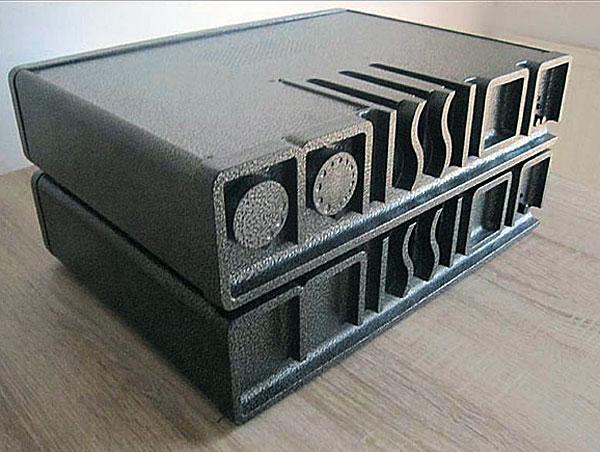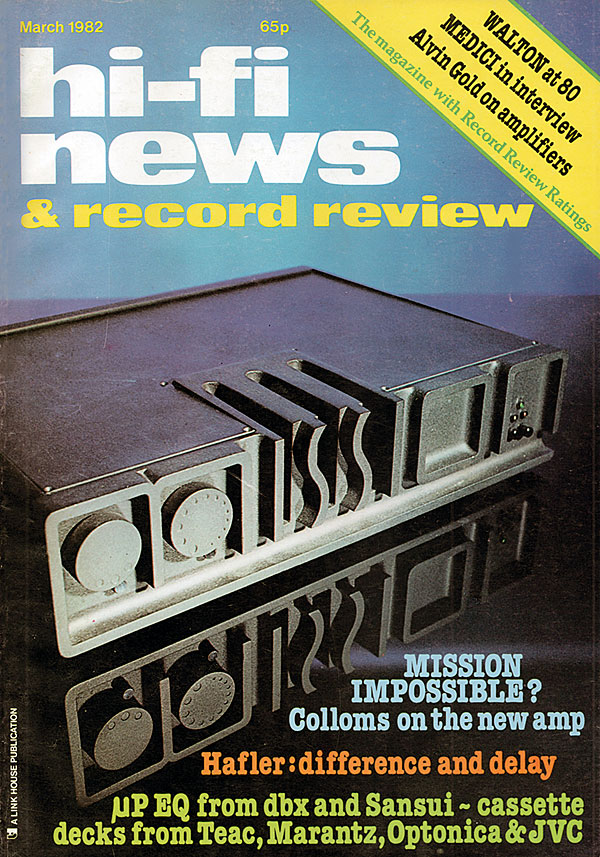Mission 776/777 combo

 As the company continues to develop its expertise in the electronics field, Martin Colloms takes stock of a strikingly-styled pre/power amp
As the company continues to develop its expertise in the electronics field, Martin Colloms takes stock of a strikingly-styled pre/power amp
While first established and based in the UK, Mission also now has a design facility and manufacturing plant in Canada. It's here that its latest amplifiers were developed by Henry Azima, the brother of Farad Azima who founded Mission Electronics some years ago.
In view of the design and engineering content of the 776/777, they are fairly competitively priced at around £900 the pair, though to succeed in that market their performance will need to be excellent. Arguably the most distinctive feature of the amps is the heavy 'macho' look of the massive front panel casting.
This is founded on the Mission logo itself, with the central letters extended inwards in the form of a thick barred heatsink, ending in a block section. This casting is used for both power and preamps, although in the latter it serves no useful purpose and, in fact, severely restricts the potential number of control facilities. On the other hand it does serve to complement the power unit visually.

Mission 777
The power amp uses a DC-coupled circuit employing just 14dB of negative feedback. Nevertheless, its wide bandwidth design means its HF –3dB point appears at a claimed 1.2MHz, while the intrinsic distortion level is virtually independent of frequency or signal complexity over the audio bandwidth. High regulation toroidal power transformers (200VA for 3.5%) are used, one for each channel, feeding selected high current structurally stable reservoir capacitors, bypassed by large polyester components.
Built as two modules, the power output boards are bolted to the central block of the massive frame casting, and no switches, contacts or relays are present in the signal path. One control is provided, namely a rear panel switch marked 'normal' and 'soft' clip. In the latter mode the distortion characteristics are modified at the threshold of clipping through to overload so that higher quantities of less unpleasant low-order harmonics are produced at the expense of the rattling harmonics typical of normal clean clipping.
Other details of its laboratory specification include suitability for 4 and 8ohm loading and a high damping factor of 60, maintained from DC to 40kHz, plus a 20A peak programme current capability and a figure of less than 0.2% total harmonic distortion, DC to 40kHz, with less than 0.05% quoted for intermodulation distortions.
![]() Sound Quality
Sound Quality
The following loudspeakers were used for auditioning: KEF 105/4, Spendor BC1, Quad ESL63 and Celestion SL6. As for preamps, these included Meridian's 101, a Quad 44, Tandberg 3002, Sony TAE-88, an Electrocompaniet, and, of course, the Mission 776. Sources were mainly disc, using a Linn Asak/lttok mounted on a Thorens TD125II deck, with additional material from copy master tapes (Revox B77).
It came as a mild shock to discover just how good this power amplifier was and also how big a margin there was between it and other established good quality models. The first impression was that of an exceptional feeling of precision and solidity to the stereo image, and the sounds comprising it. The bass was well extended with impressive power and weight, and yet it also seemed taut and highly controlled.

The middle register was unusually transparent, resolving strong depth planes in the image and keeping these stable at both high and low volumes. A feeling of greater immediacy, almost of treble lift, was also noted, although the treble itself was impressive both for its clarity and its directional ability, as well as its liveliness and natural sounding quality.
The subjective power delivery was also impressive, the unit appearing to have better dynamics and more power than its 100W per channel rating would imply. We felt that it could provide enough for all but the least sensitive loudspeakers used in circumstances where high sound levels were also required. However, there was also felt to be a hint of increasing hardness in the upper mid at full power, adding a little extra crispness and 'bite'.
Lab Results
On steady-state measurements the 777 demonstrated an exceptional power bandwidth, with barely any diminution at 20Hz and 20kHz relative to 2kHz. Typical maximum power, both channels or singly driven, was 135W into 8ohm or 21.2dB (re. 1W/8ohm) while at 4ohm the continuous power fell by 0.5dB (to about 230W) into 4ohm.
It proved capable of driving the severe 8ohm+2µF reactive load to 20.4dBW for less than 0.5% distortion; such a small 0.8dB diminution into this cruel load is commendable. On peak drive the 8ohm figure improved little, verifying the high degree of power supply regulation, while into 4ohm the output gain was similarly small.
























































